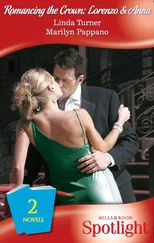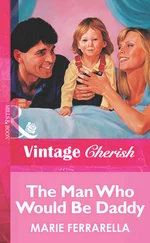1 ...6 7 8 10 11 12 ...24 It was usual for aristocratic families to send a daughter approaching adolescence to live with a well-connected family. The tradition served a number of useful purposes, binding, as it did, parents as allies and children as friends. The contacts made were used often in the arrangement of a future marriage. For a girl of noble birth it was virtually unthinkable that her marriage should be left to chance, but Jane, at ten, was rather young to be ‘put out’, as it was termed. And there were other considerations. We do not know the precise timing of Harington’s visit, but if it took place before Sudeley’s marriage to Catherine Parr became public, Harington was asking Dorset to send his daughter to the household of an unmarried man. If, as is more likely, it took place after, then it was to a man whose marriage was considered a scandal. Catherine Parr had destroyed her reputation by marrying so soon after the King’s death. Virtue, in a woman, was associated almost entirely with chastity, that is, unimpeachable sexual morality and continence. It was believed that the female sex drive was stronger than the male (since women were creatures of feeling rather than reason) and therefore the likely explanation for Catherine Parr’s behaviour was assumed to be unbridled lust. Sudeley, meanwhile, was judged guilty of selfish ambition. If his wife became pregnant it would be uncertain whose child it was. This was potentially dangerous to the stability of the country. Since Henry VIII had introduced a law requiring the monarch’s assent to any royal marriage, their actions might even have been judged treasonous, had Sudeley not persuaded Edward to write a letter that made it appear the marriage was made at his suggestion.
Harington had anticipated that Dorset’s reaction to the proposed wardship might not be favourable and assured Dorset that Sudeley would see to it that Jane was placed in a most advantageous marriage. ‘With whom?’ Dorset demanded. ‘Marry,’ Harington replied, ‘I doubt not but you shall see him marry her to the King; and fear you not but he will bring it to pass.’ Dorset was stunned by Harington’s remark. He listened, however, as Harington continued, describing how Sudeley, watching Jane about court, had declared that she was ‘as handsome a Lady as any in Christendom, and that, if the King’s Majesty, when he came to age, would marry within the realm, it was as likely it would be there than in any other place’. 9 Dorset began to consider the possibilities: maybe Sudeley’s idea was not an unrealistic one? Henry VIII had taken English wives. His daughter was an intelligent, highly educated, evangelical princess: the perfect bride for Edward. For the Greys, it would also be a better match than either his grandfather, or he himself, had made. Dorset agreed to discuss the matter of Jane’s wardship with Sudeley as soon as possible.
While the royal children played their innocent games, the adults began moving the pawns on the political chessboard. Within a week of Harington’s approaches, Dorset was at Seymour Place along the Strand, talking with Sudeley in the privacy of his garden. The banging and clattering of builders echoed across the hedges and herb beds. Next door, the Protector was clearing the local parish church of St Mary and the Holy Innocents to make way for a vast Italianate palace. It was the first building of its kind in England, a suitable monument to Somerset’s burgeoning status as alter rex (another king). 10 Above the noise Sudeley repeated to Dorset that he believed Jane would make the King a fine Queen. But he offered also substantial proof of his friendship: several hundred pounds towards an eventual payment of £2,000 for Jane’s wardship. Dorset was impressed. Sudeley’s ‘fair promises’ and eagerness to be his friend were in stark contrast to the treatment he had received at Somerset’s hands. Convinced that an alliance with Sudeley was an honourable way forward he sent for his daughter immediately.
Dorset’s actions have since been characterised as those of a heartless parent selling his daughter for profit. As Jane watched her bags being packed and kissed her sisters farewell, this, however, was surely not how she saw it. It was usual for money to change hands in matters of wardship. Her father’s had been bought twice over, by the late Earl of Arundel and Duke of Suffolk, and for double the figure Sudeley was prepared to pay for Jane. It was not the money that had appealed to Dorset. By placing his daughter with Sudeley, he would open the greatest possible prospects for her, which in turn could bring glory to the family name. Jane would have understood this, for noble children were part of a family network that extended to kin and beyond, in which each was expected to play their part for the good of the whole. Jane’s mother, Frances, appears to have had her doubts, however, about the wisdom of the scheme. Her friend and stepmother Katherine Suffolk disapproved of Sudeley and was shocked by his hasty marriage to their friend, the Queen dowager, Catherine Parr. But although Frances later made strenuous efforts to keep Jane at home, away from Sudeley, she saw it as her duty to support her husband in his decisions - and from this time forward he was determined that his favourite child would one day be Queen.
The ten-year-old was installed with her guardian at Seymour Place as soon as the necessary arrangements had been made. Despite her mother’s possible misgivings it was to be one of the happiest periods of Jane Grey’s life.
Chapter IV The Example of Catherine Parr
It was only a short boat ride from Dorset House to Seymour Place, but Jane’s new home opened a more independent world for her. At the best of times large aristocratic households were not very good at giving girls the kind of closely supervised lives their parents would have liked. Guardians were often at court or staying with friends, and the girls were left in the care of servants who had less reason than their parents to watch their manners and behaviour. 1 Even an experienced stepmother like Catherine Parr sometimes neglected her duties. The Protector’s wife, Anne, Duchess of Somerset, was shocked to see Parr’s ward, the young Princess Elizabeth, unaccompanied, out in a barge on the Thames one night that summer. There were no such complaints about Sudeley’s care of Jane, but he was an indulgent guardian, with more pressing concerns than babysitting a ten-year-old girl. Jane, a confident child, must have enjoyed the novel sense of freedom this gave her, although she was never left entirely to her own devices.
When Jane wasn’t at Seymour Place she was attending the Queen dowager’s household with her guardian. In the last year of her life she would return to Catherine’s former house at the royal manor of Chelsea. Here, in the summer the garden boasted orchards of cherry and peach, velvety damask roses and the warm scents of lavender and rosemary. Inside the noise and bustle was greater even than Jane was used to at Bradgate. In addition to the Queen’s Privy Chamber and Maids of Honour, the household included upwards of 120 gentlemen and yeomen. At thirty-five Catherine Parr remained attractive; with a handsome husband she worked hard to stay beautiful, plucking her eyebrows with silver tweezers and dressing in the latest fashions. Children are always fascinated by the rituals of adult grooming and, to the later irritation of her tutor John Aylmer, Jane developed a similar fondness for carefully styled hair and fine clothes. She also grew to share the Queen dowager’s love of music. Catherine and her brother, William Parr of Northampton, were the greatest patrons of musicians at court. The most famous, the five Bassano brothers, provided the only permanent recorder consort known in England before the twentieth century. One brother, Baptista, instructed the Princess Elizabeth in Italian, as well as in playing the lute.
Читать дальше












